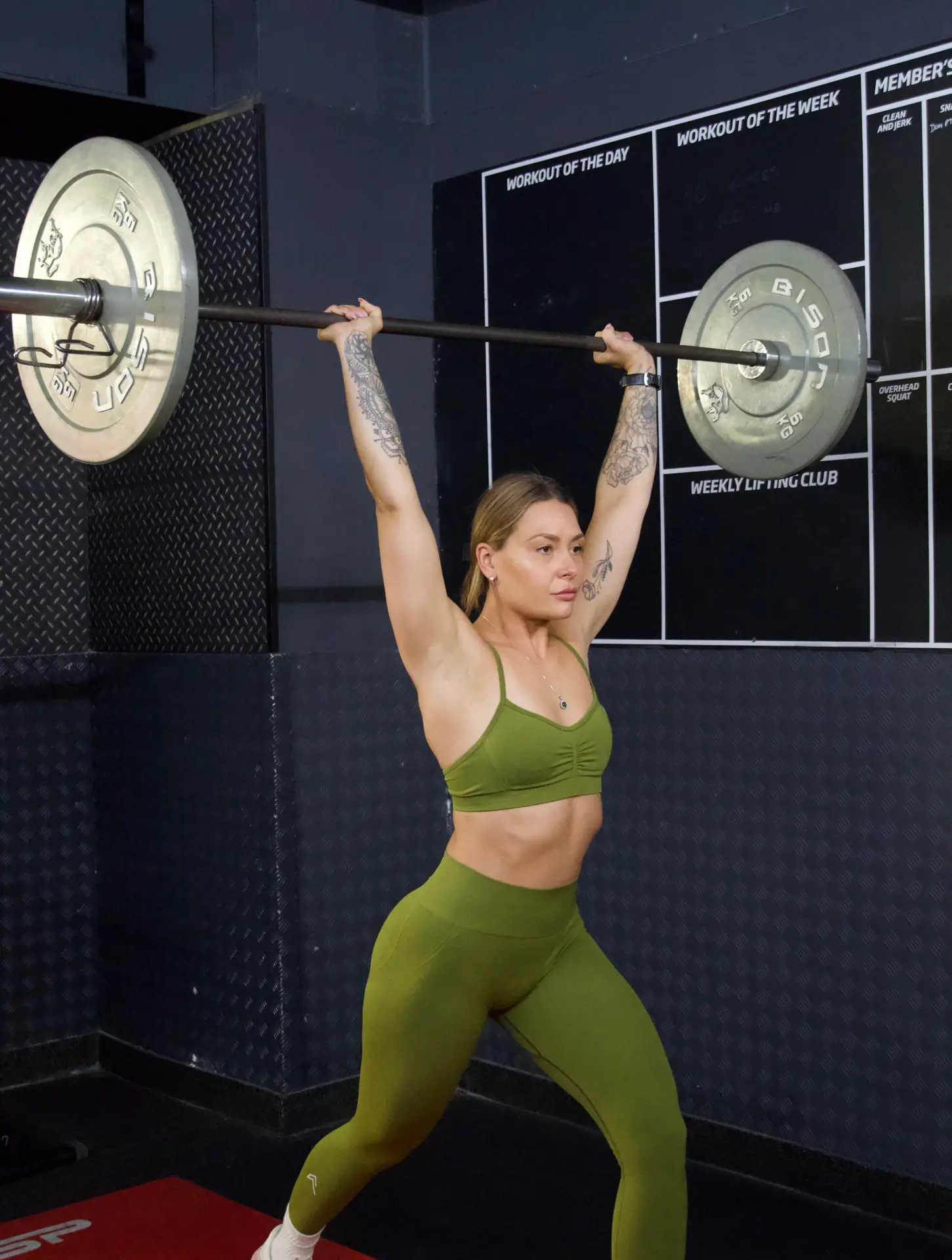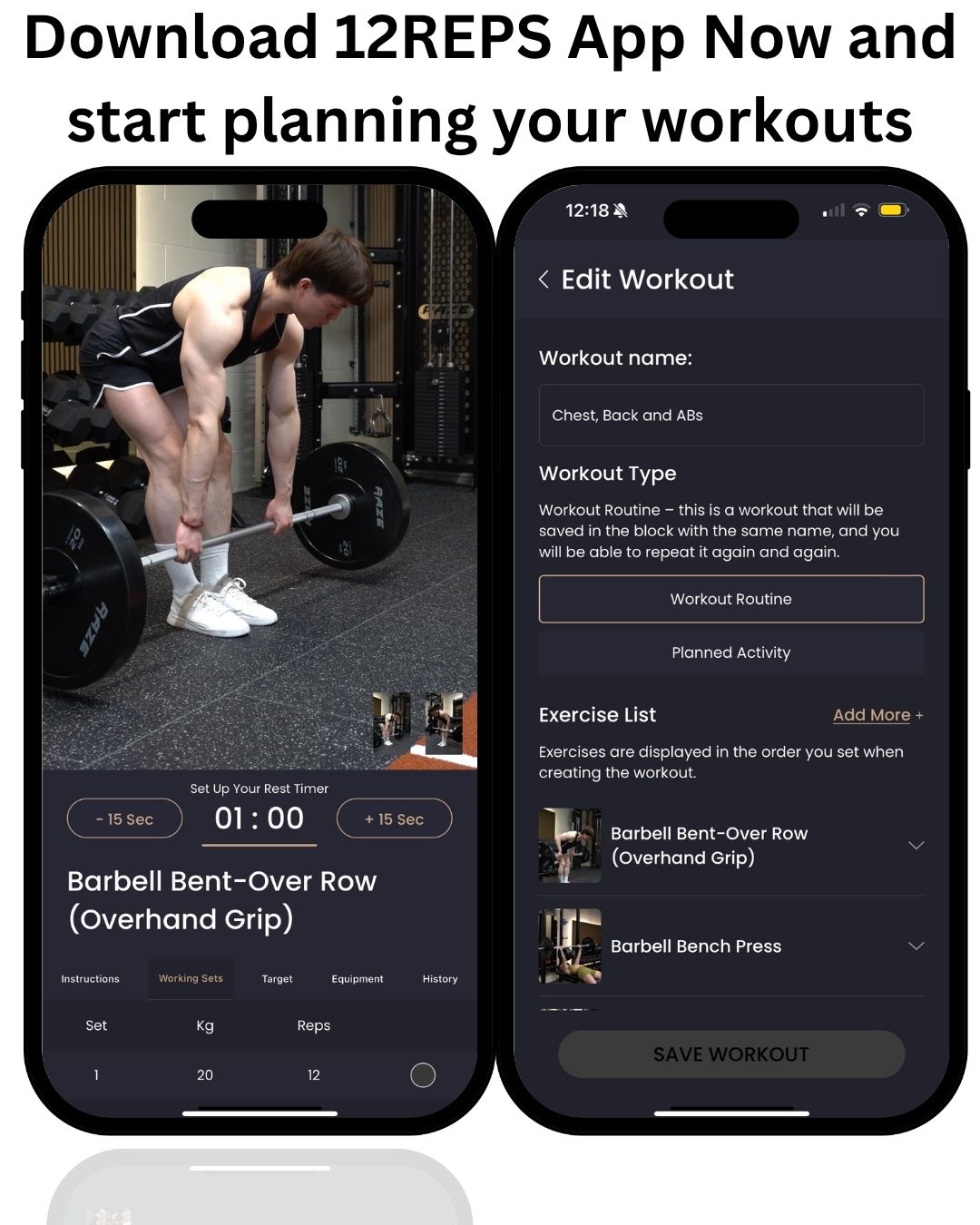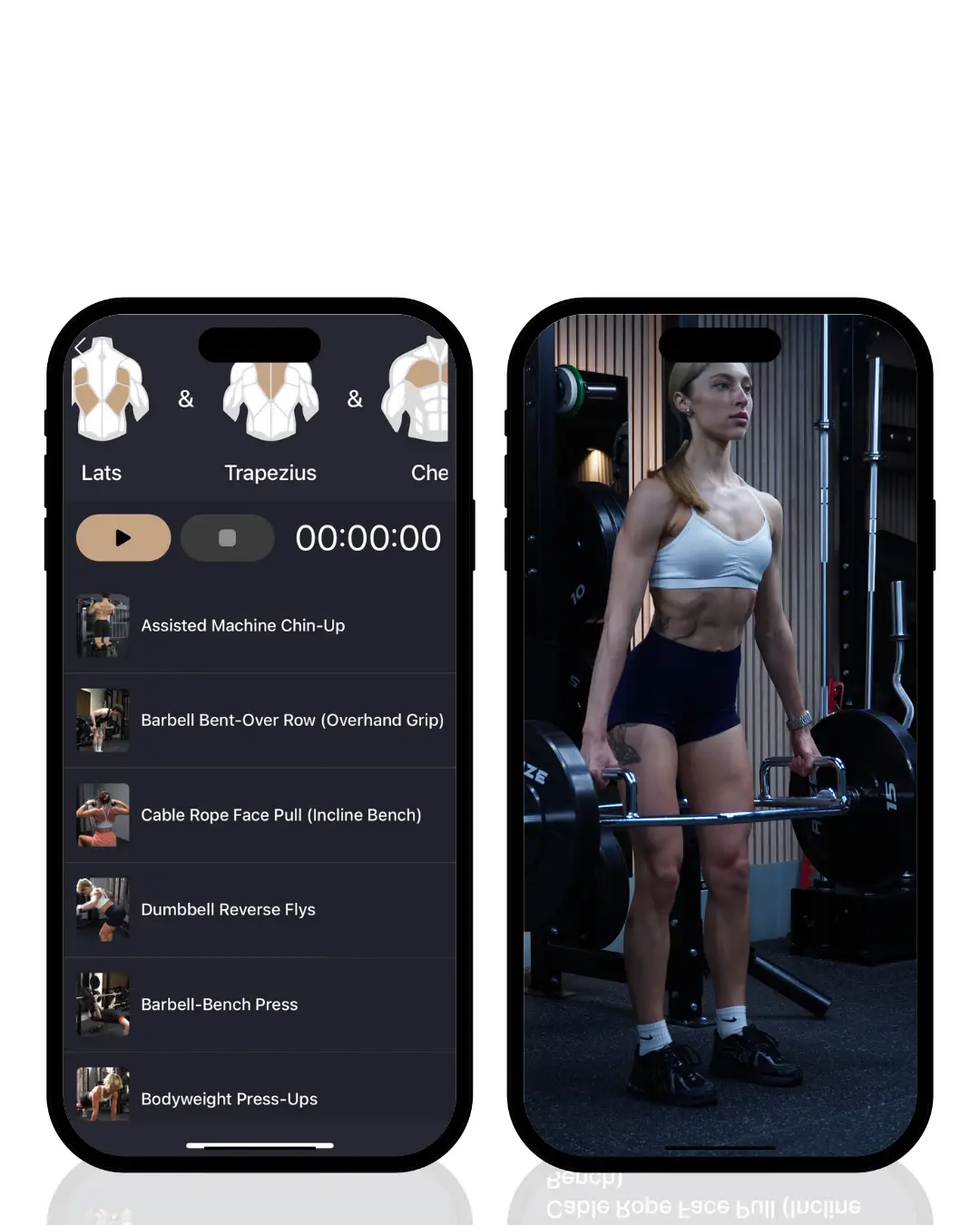Written by Will Duru, BSc (Hons) Sport and Exercise Science, award-winning Personal Trainer with over 10 years of experience in strength training and optimising recovery .
In my 10 years as a personal trainer, I have worked with hundreds of women. One thing I notice again and again is how many avoid upper body training. They stick to cardio machines or focus only on legs and glutes. When I ask why, the answers are always the same. “I don’t want to get bulky.” “Women aren’t meant to be strong on top.” “I can’t even do one push-up, so what’s the point?”
These beliefs are holding women back from incredible benefits. Upper body strength is not just about looking good. It is about feeling powerful, confident, and capable in daily life. It is about carrying your groceries without strain, lifting your children with ease, and feeling strong in your own skin.
As a sports scientist and trainer, I have seen the research. I have also seen the real-world results. Women can build impressive upper body strength. They can develop lean, defined muscles. They can achieve things they never thought possible. The key is understanding the facts, not the myths.
This article will break down everything you need to know about upper body training for women. I will share what I have learned from working with clients, studying exercise science, and seeing amazing transformations. By the end, you will understand why upper body strength training should be part of every woman’s fitness routine.
The 12reps app makes this journey easier. It creates personalised upper body workouts based on your equipment, goals, and current fitness level. You can track your progress and see your strength grow week by week. Download the 12reps.com to start your upper body transformation today.
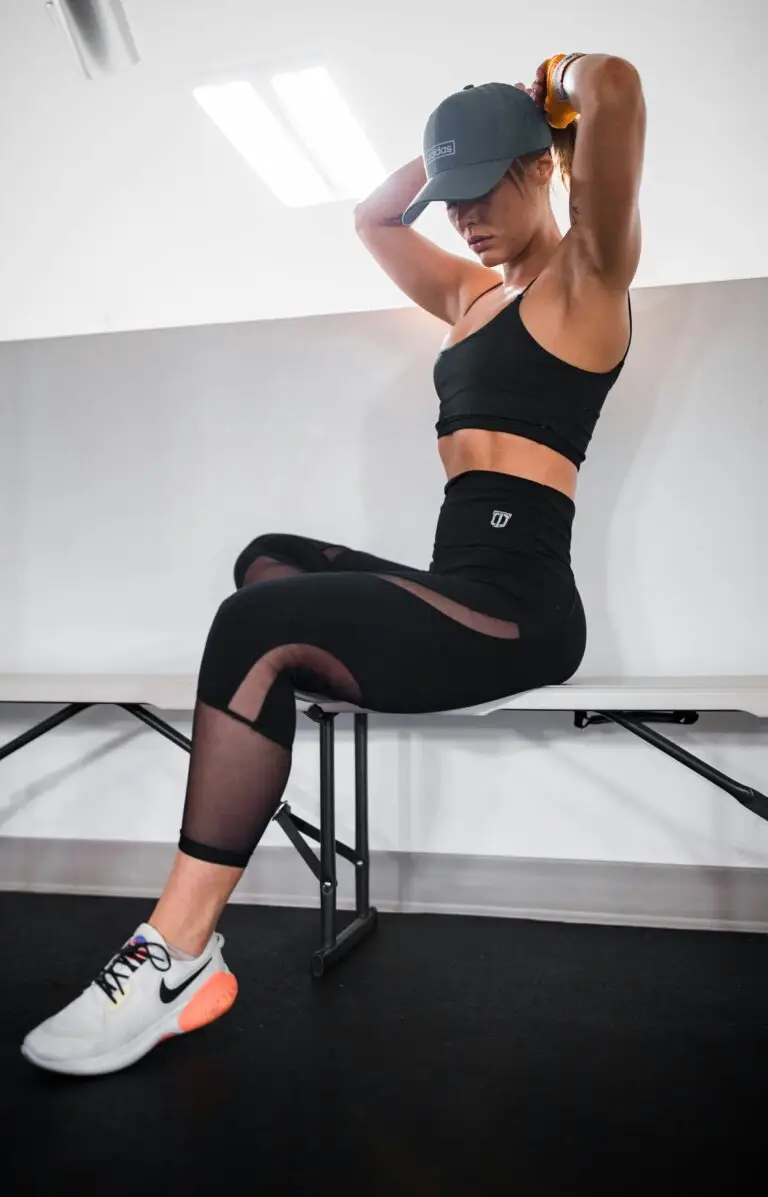
Debunking Upper Body Training Myths for Women
Let me start with the biggest myth I hear. “Women can’t build upper body muscle like men.” This is simply not true. Yes, women have different hormones from men. Yes, they typically start with less upper-body strength. But this does not mean they cannot build significant muscle and strength.
Research shows women can increase their upper body strength by 7.2% per week with proper training. That is faster than lower-body gains. I have seen female clients go from struggling with one push-up to performing multiple pull-ups. The potential is there. The problem is the myths that stop women from trying.
The “bulky” fear is the most common barrier I encounter. Women worry that lifting weights will make them look masculine. This fear comes from misunderstanding how muscle growth works. Building large, bulky muscles requires specific conditions. You need high testosterone levels, years of heavy training, and often genetic predisposition. Most women do not have these factors.
What women do get from upper body training is lean, defined muscle. They get stronger shoulders, toned arms, and better posture. They develop functional strength that improves their daily life. The “bulky” look that women fear is actually very difficult to achieve, even when trying.
Hormonal differences between men and women are real but often misunderstood. Women have lower testosterone levels, which affects muscle-building speed. However, women also have advantages. They recover faster between sets. They can handle higher training volumes. They are often more consistent with their workouts.
The benefits of upper body strength for women go far beyond appearance. Strong shoulders and arms improve posture, reducing neck and back pain. Upper body strength helps with daily activities like carrying children, moving furniture, or playing sports. It builds confidence and mental toughness that carry into other areas of life.
I have trained women in their 40s, 50s, and 60s who built impressive upper body strength. Age is not a barrier. Previous experience is not required. The only requirement is consistency and proper programming. Every woman can build upper body strength if she commits to the process.

Anatomy and Biomechanics: Women's Upper Body Considerations
Understanding anatomy helps explain why women need specific approaches to upper body training. Women typically have different proportions than men. They often have longer arms relative to their torso. This affects leverage in exercises like push-ups and pull-ups.
Women also tend to have less upper body muscle mass to start with. Research shows women have about 56% of men’s upper body strength initially. This is not a limitation. It is simply a starting point. With training, women can make dramatic improvements from this baseline.
Shoulder structure is another important consideration. Women often have more mobile shoulders, which can be an advantage for range of motion. However, this mobility can also create stability challenges. This is why proper form and progressive loading are crucial for women’s upper body training.
Common imbalances I see in female clients include weak posterior deltoids and rhomboids. Modern life creates forward head posture and rounded shoulders. Women who spend time at desks or caring for children often develop these patterns. Upper body training must address these imbalances.
The good news is that women often have better muscle endurance than men. They can perform more repetitions at submaximal loads. This makes them well-suited for higher volume training approaches. It also means they can handle more frequent upper-body sessions.
Injury prevention is always a priority in my programming. Women are more prone to certain shoulder injuries, particularly impingement. This is often due to muscle imbalances and poor movement patterns. Proper exercise selection and progression prevent these issues.
I always start female clients with movement quality before adding load. We work on shoulder mobility, scapular stability, and proper alignment. This foundation prevents injuries and ensures better results as we progress to heavier weights.
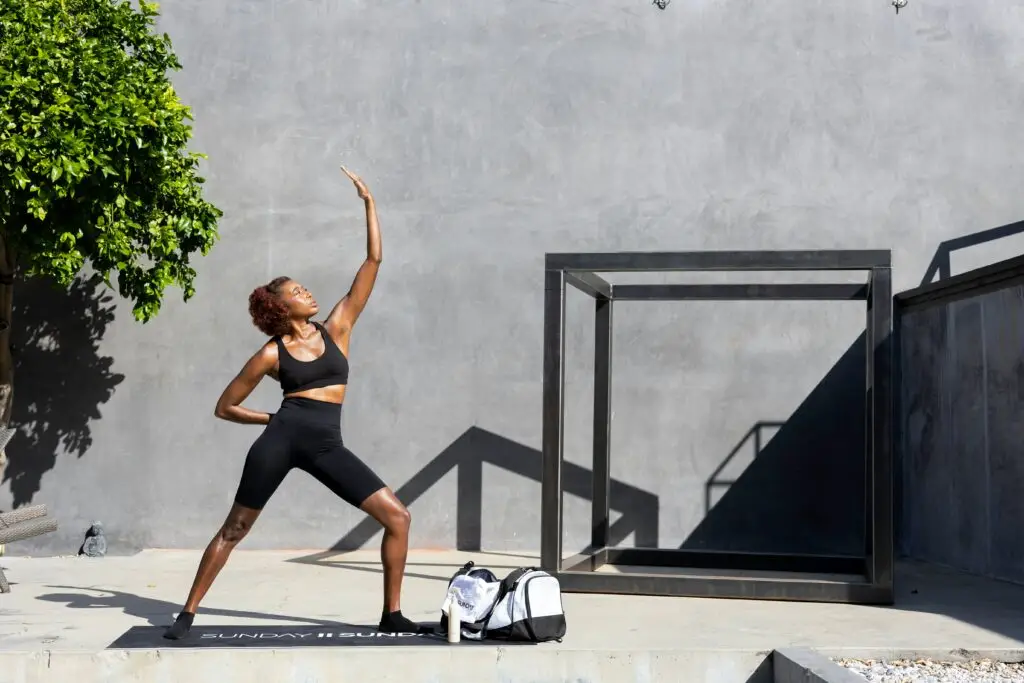
Essential Upper Body Exercises for Women
Push-ups are the foundation of upper-body training for women. I start every female client with push-up progressions, regardless of their current ability. If they cannot do a full push-up, we begin with wall push-ups or incline push-ups using a bench.
The progression is simple but effective. Wall push-ups build initial strength and teach proper form. Incline push-ups on a bench or step increase the challenge gradually. Knee push-ups develop more strength while maintaining good form. Finally, full push-ups from the toes represent a significant milestone.
I never rush this progression. Some clients take weeks to move from wall push-ups to knee push-ups. Others progress faster. The key is consistency and proper form at each level. Quality always beats quantity in my programs.
Pull-ups and chin-ups are often seen as impossible for women. This is another myth I work to dispel. Every woman can work toward her first pull-up with the right approach. I use assisted pull-ups, negative repetitions, and rowing exercises to build the necessary strength.
Assisted pull-ups using a band or machine teach the movement pattern while reducing body weight. Negative repetitions focus on the lowering portion of the movement, which builds strength effectively. Rowing exercises strengthen the same muscles used in pull-ups.
The first pull-up is always a celebration in my studio. I have seen women cry with joy when they achieve this goal. It represents more than just physical strength. It proves they can accomplish things they thought were impossible.
Pressing movements are crucial for balanced upper body development. I include overhead presses, bench presses, and incline presses in women’s programs. Each targets slightly different muscle groups and movement patterns.
Overhead pressing builds functional strength for daily activities. It also improves shoulder stability and posture. I start with light dumbbells or even bodyweight movements before progressing to heavier loads.
Bench pressing is excellent for building chest, shoulder, and tricep strength. Many women avoid this exercise, thinking it is only for men. This is a mistake. Bench pressing builds impressive upper body strength and muscle definition.
Rowing and pulling exercises balance all the pressing movements. I include bent-over rows, seated rows, and face pulls in every program. These exercises strengthen the posterior chain and improve posture.
Isolation exercises have their place in women’s upper-body training. Bicep curls, tricep extensions, and lateral raises help target specific muscles. They are also great for building confidence and seeing visible results.
The 12reps app includes video demonstrations of all these exercises. It shows proper form and provides modifications for different fitness levels. This ensures women can train safely and effectively, whether at home or in the gym.
Programming Upper Body Training for Women
Frequency is one of the most important programming variables for women’s upper body training. I typically recommend training the upper body 2-3 times per week. This provides enough stimulus for growth while allowing adequate recovery.
Women can often handle higher training frequencies than men due to faster recovery. However, beginners should start with 2 sessions per week. More experienced trainees can progress to 3 sessions or even 4 with proper programming.
Volume recommendations vary based on experience and goals. Beginners might start with 8-12 sets per week for major muscle groups. Intermediate trainees can handle 12-16 sets. Advanced trainees might perform 16-20 sets per week.
I always start conservative with volume and build gradually. It is better to do too little initially than to overwhelm the body and create excessive fatigue. Progressive overload is the key to continued improvement.
Intensity should also progress gradually. Beginners focus on learning movement patterns with light weights. As technique improves, we can increase loads and challenge the muscles more significantly.
I use a variety of rep ranges in women’s programs. Higher reps (12-15) build endurance and teach proper form. Moderate reps (8-12) promote muscle growth. Lower reps (5-8) develop maximum strength.
Balancing pushing and pulling movements is crucial for shoulder health and posture. For every pushing exercise, I include at least one pulling exercise. This prevents muscle imbalances and reduces injury risk.
Rest periods between sets depend on the exercise and training goal. For strength development, I recommend 2-3 minutes between sets. For muscle building, 60-90 seconds is often sufficient. For endurance, 30-60 seconds works well.
The 12reps app handles all this programming complexity automatically. It creates balanced routines based on your goals, experience level, and available equipment. You can focus on training hard while the app handles the science.
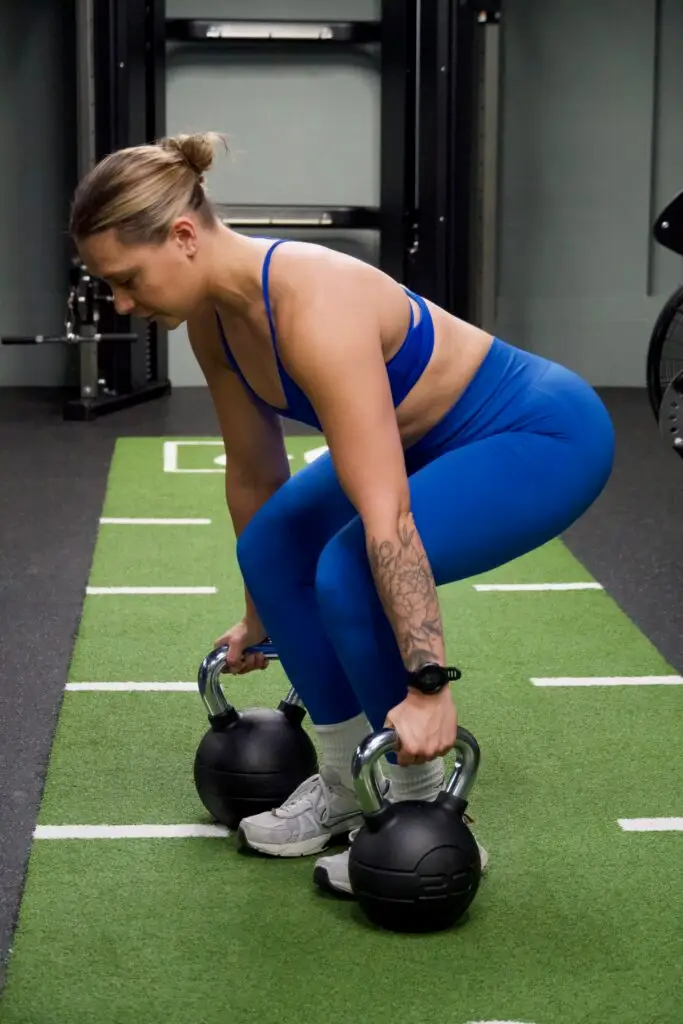
Overcoming Common Upper Body Training Challenges
Building initial strength for bodyweight exercises is often the biggest challenge for women starting upper-body training. Many feel discouraged when they cannot perform a single push-up or pull-up. I always remind clients that everyone starts somewhere.
The key is using appropriate progressions and celebrating small victories. Moving from wall push-ups to incline push-ups is progress. Holding a plank for 30 seconds longer is progress. Every improvement matters and builds toward bigger goals.
Gym intimidation is real for many women, especially in the weight room. The upper body area is often dominated by men, which can feel intimidating. I help clients develop confidence through knowledge and preparation.
Learning proper form before entering the gym helps build confidence. Knowing exactly what exercises to do and how to do them reduces anxiety. Having a clear plan eliminates the uncertainty that creates intimidation.
I also encourage women to train during less busy times initially. Early mornings or mid-afternoons are often quieter. This allows them to practice exercises without feeling watched or judged.
Equipment modifications make upper body training accessible regardless of gym access. Resistance bands can replace many weight exercises. Water bottles or books can serve as light weights. Creativity opens up many possibilities.
For home training, I recommend starting with bodyweight exercises and resistance bands. These provide excellent training stimulus without requiring expensive equipment. As strength improves, adding dumbbells or kettlebells increases options.
Tracking progress is crucial for maintaining motivation. I have clients record their workouts, noting weights used, reps completed, and how they felt. Seeing improvement on paper reinforces the value of consistent training.
Progress is not always linear. Some weeks will feel harder than others. Some exercises will improve faster than others. I teach clients to focus on long-term trends rather than daily fluctuations.
Celebrating achievements keeps motivation high. I make a big deal when clients reach milestones like their first full push-up or pull-up. These moments build confidence and reinforce the value of consistent effort.
The 12reps app makes tracking progress simple and motivating. It logs your weights, reps, and sets automatically. You can see your strength improvements over time and celebrate your achievements. The app adapts to your progress, ensuring continued challenge and growth.
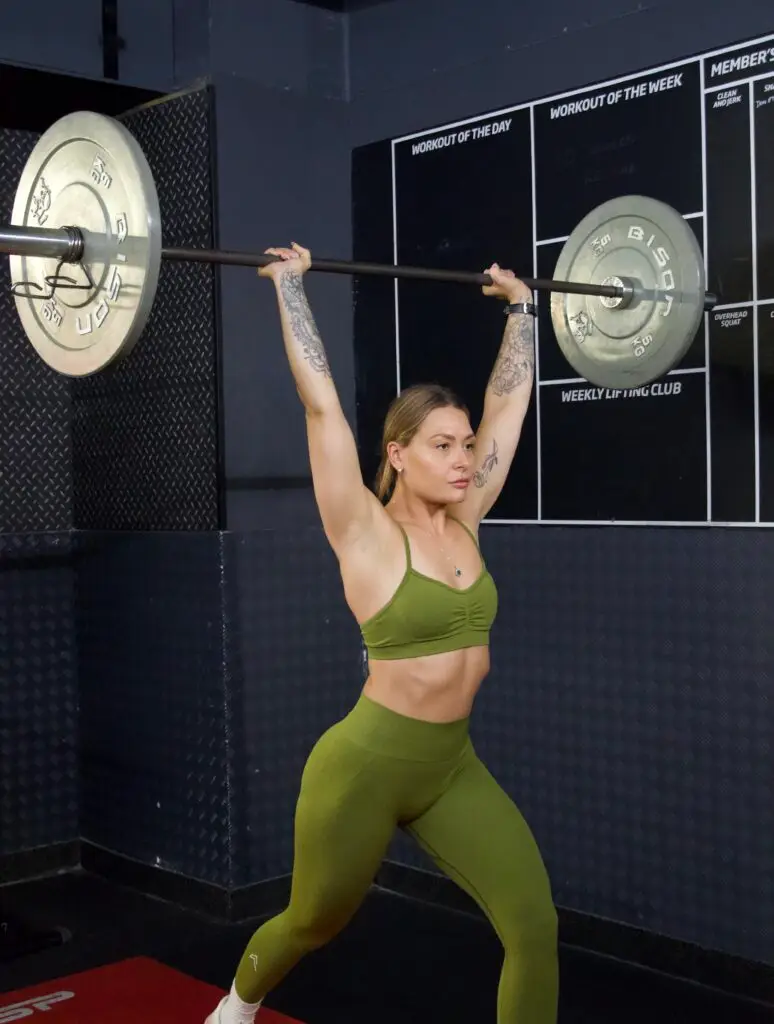
6-Week Upper Body Strength Training Program for Women
This program follows a push/pull/legs split, training 3 times per week. Each phase builds on the previous one, creating progressive overload and continuous improvement. All phases include supersets to maximise efficiency and results.
Phase 1: Foundation Building (Weeks 1-2) – Bodyweight Focus
Day 1: Push (Chest, Shoulders, Triceps)
Exercise A | Sets | Reps | Rest | Exercise B (Superset) | Sets | Reps | Rest |
Wall Push-ups | 3 | 8-12 | 30s | Pike Push-ups | 3 | 5-8 | 60s |
Incline Push-ups (bench) | 3 | 6-10 | 30s | Tricep Dips (chair) | 3 | 5-8 | 60s |
Plank Hold | 3 | 20-30s | 30s | Mountain Climbers | 3 | 10 each | 60s |
Day 2: Pull (Back, Biceps)
Exercise A | Sets | Reps | Rest | Exercise B (Superset) | Sets | Reps | Rest |
Inverted Rows (table) | 3 | 5-8 | 30s | Superman Hold | 3 | 15-20s | 60s |
Reverse Fly (bodyweight) | 3 | 8-12 | 30s | Wall Handstand Hold | 3 | 10-15s | 60s |
Dead Hang | 3 | 10-20s | 30s | Arm Circles | 3 | 10 each | 60s |
Day 3: Legs & Core
Exercise A | Sets | Reps | Rest | Exercise B (Superset) | Sets | Reps | Rest |
Bodyweight Squats | 3 | 12-15 | 30s | Glute Bridges | 3 | 12-15 | 60s |
Lunges | 3 | 8 each | 30s | Calf Raises | 3 | 15-20 | 60s |
Plank | 3 | 20-30s | 30s | Side Plank | 3 | 15s each | 60s |
Phase 2: Strength Building (Weeks 3-4) – Bodyweight + Weight Supersets
Day 1: Push (Chest, Shoulders, Triceps)
Exercise A | Sets | Reps | Rest | Exercise B (Superset) | Sets | Reps | Rest |
Push-ups | 4 | 6-10 | 30s | Dumbbell Shoulder Press | 4 | 8-12 | 90s |
Incline Push-ups | 4 | 8-12 | 30s | Lateral Raises | 4 | 10-15 | 90s |
Tricep Dips | 4 | 6-10 | 30s | Overhead Tricep Extension | 4 | 8-12 | 90s |
Day 2: Pull (Back, Biceps)
Exercise A | Sets | Reps | Rest | Exercise B (Superset) | Sets | Reps | Rest |
Assisted Pull-ups | 4 | 3-6 | 30s | Bent-over Rows | 4 | 8-12 | 90s |
Inverted Rows | 4 | 6-10 | 30s | Bicep Curls | 4 | 10-15 | 90s |
Reverse Fly | 4 | 8-12 | 30s | Face Pulls (band) | 4 | 12-15 | 90s |
Day 3: Legs & Core
Exercise A | Sets | Reps | Rest | Exercise B (Superset) | Sets | Reps | Rest |
Goblet Squats | 4 | 10-15 | 30s | Jump Squats | 4 | 8-12 | 90s |
Dumbbell Lunges | 4 | 8 each | 30s | Single-leg Glute Bridges | 4 | 10 each | 90s |
Plank | 4 | 30-45s | 30s | Russian Twists | 4 | 15 each | 90s |
Phase 3: Power Development (Weeks 5-6) – Higher Volume with Weights
Day 1: Push (Chest, Shoulders, Triceps)
Exercise A | Sets | Reps | Rest | Exercise B (Superset) | Sets | Reps | Rest |
Dumbbell Bench Press | 5 | 8-12 | 30s | Push-ups | 5 | 6-10 | 90s |
Dumbbell Shoulder Press | 5 | 10-15 | 30s | Pike Push-ups | 5 | 5-8 | 90s |
Kettlebell Press | 4 | 8 each | 30s | Tricep Dips | 4 | 8-12 | 90s |
Lateral Raises | 4 | 12-15 | 30s | Front Raises | 4 | 10-12 | 90s |
Day 2: Pull (Back, Biceps)
Exercise A | Sets | Reps | Rest | Exercise B (Superset) | Sets | Reps | Rest |
Pull-ups/Assisted | 5 | 3-8 | 30s | Bent-over Rows | 5 | 10-15 | 90s |
Kettlebell Rows | 5 | 8 each | 30s | Inverted Rows | 5 | 8-12 | 90s |
Dumbbell Bicep Curls | 4 | 12-15 | 30s | Hammer Curls | 4 | 10-12 | 90s |
Face Pulls | 4 | 15-20 | 30s | Reverse Fly | 4 | 12-15 | 90s |
Day 3: Legs & Core
Exercise A | Sets | Reps | Rest | Exercise B (Superset) | Sets | Reps | Rest |
Kettlebell Squats | 5 | 12-15 | 30s | Jump Squats | 5 | 8-10 | 90s |
Dumbbell Lunges | 5 | 10 each | 30s | Bulgarian Split Squats | 5 | 8 each | 90s |
Kettlebell Deadlifts | 4 | 10-12 | 30s | Single-leg RDL | 4 | 8 each | 90s |
Plank | 4 | 45-60s | 30s | Mountain Climbers | 4 | 15 each | 90s |
Program Notes
- Rest 1 day between each training session
• Progress by adding reps, then sets, then weight
• Focus on proper form over heavy weight
• Complete Exercise A, rest 30 seconds, then complete Exercise B, rest 90 seconds before repeating
• Use the 12reps app to track your progress and log workouts
• The app will help you select appropriate weights based on your strength level Exercise Demonstrations:
All exercises in this program are demonstrated in the 12reps app with proper form cues and modifications. The app adapts the program based on your available equipment and tracks your progress automatically.Download the 12reps app at just12reps.com to access:
• Video demonstrations of every exercise
• Automatic workout logging and progress tracking
• Personalised weight recommendations
• Equipment-based workout modifications
• Progress photos and strength tracking features
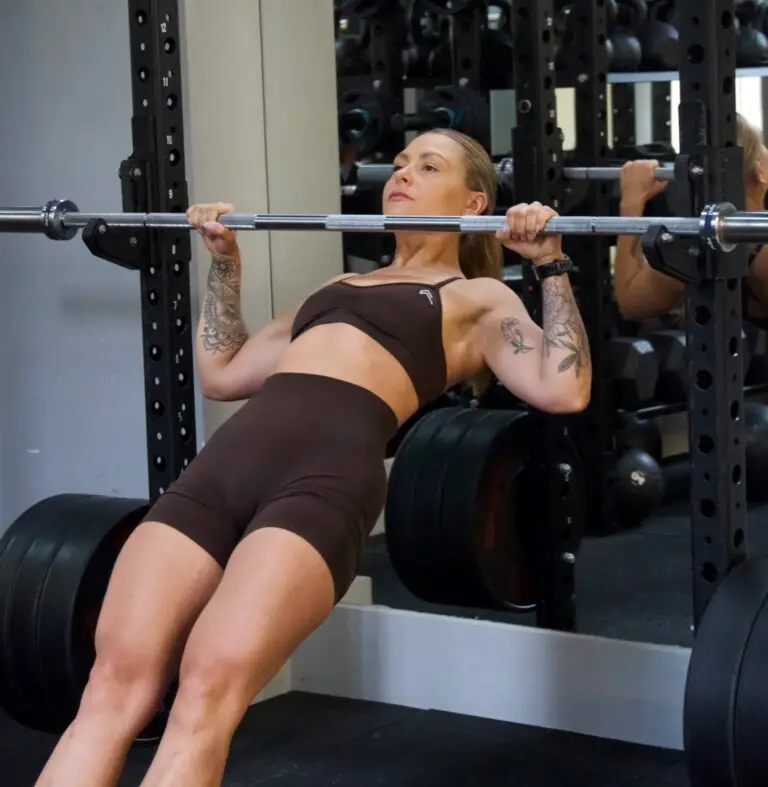
Conclusion
Upper body strength training transforms women’s lives in ways that go far beyond physical appearance. It builds confidence, improves daily function, and proves that women are capable of incredible things. The myths and barriers that hold women back are just that – myths.
Every woman can build upper body strength with the right approach. It starts with understanding the facts, not the fears. It continues with consistent training using appropriate exercises and progressions. It succeeds through patience, persistence, and celebrating every victory along the way.
As a personal trainer and sports scientist, I have seen hundreds of women transform their upper bodies and their lives. The potential is there for every woman reading this article. The only question is whether you will take the first step.
The 12reps app makes that first step easier than ever. It creates personalised upper body workouts based on your equipment, goals, and fitness level. It tracks your progress and adapts as you get stronger. It provides the guidance and motivation you need to succeed.
Your upper body strength journey starts today. Download the 12reps app and discover what you are truly capable of achieving. Your stronger, more confident self is waiting.
References
-
Jung, R., et al. (2023). Muscle strength gains per week are higher in the lower-body than the upper-body in resistance training experienced healthy young women. PLoS One. 2. Miller, A.E., et al. (1993). Gender differences in strength and muscle fiber characteristics. European Journal of Applied Physiology.
3. American College of Sports Medicine. (2009). Position Stand: Progression models in resistance training for healthy adults. Medicine & Science in Sports & Exercise.


